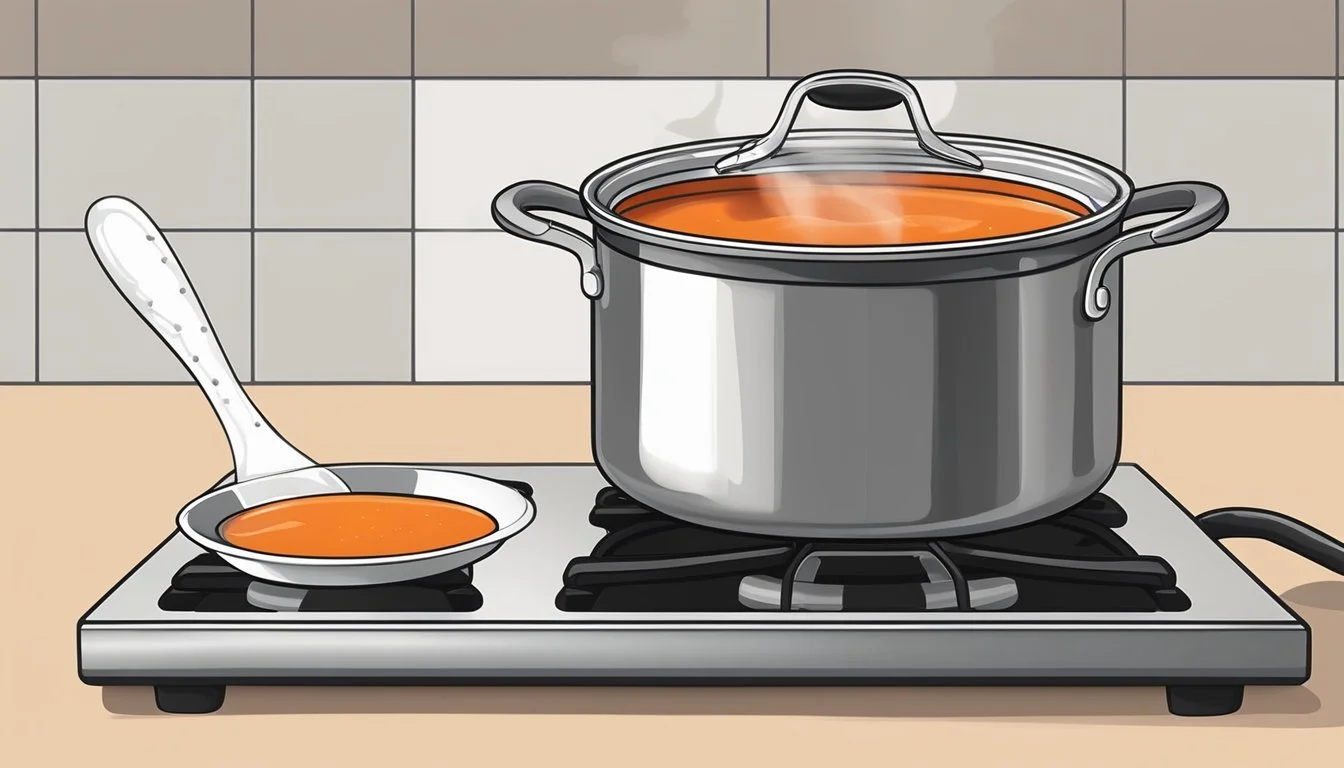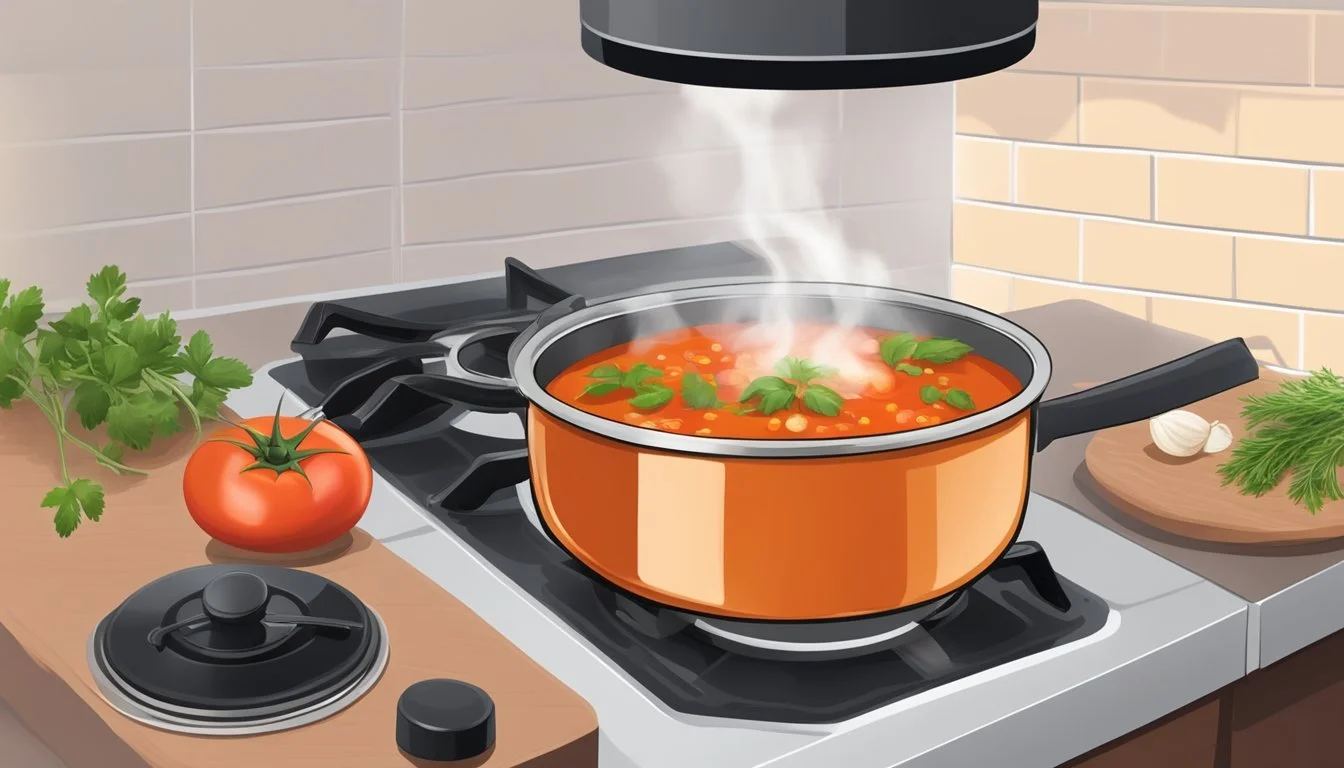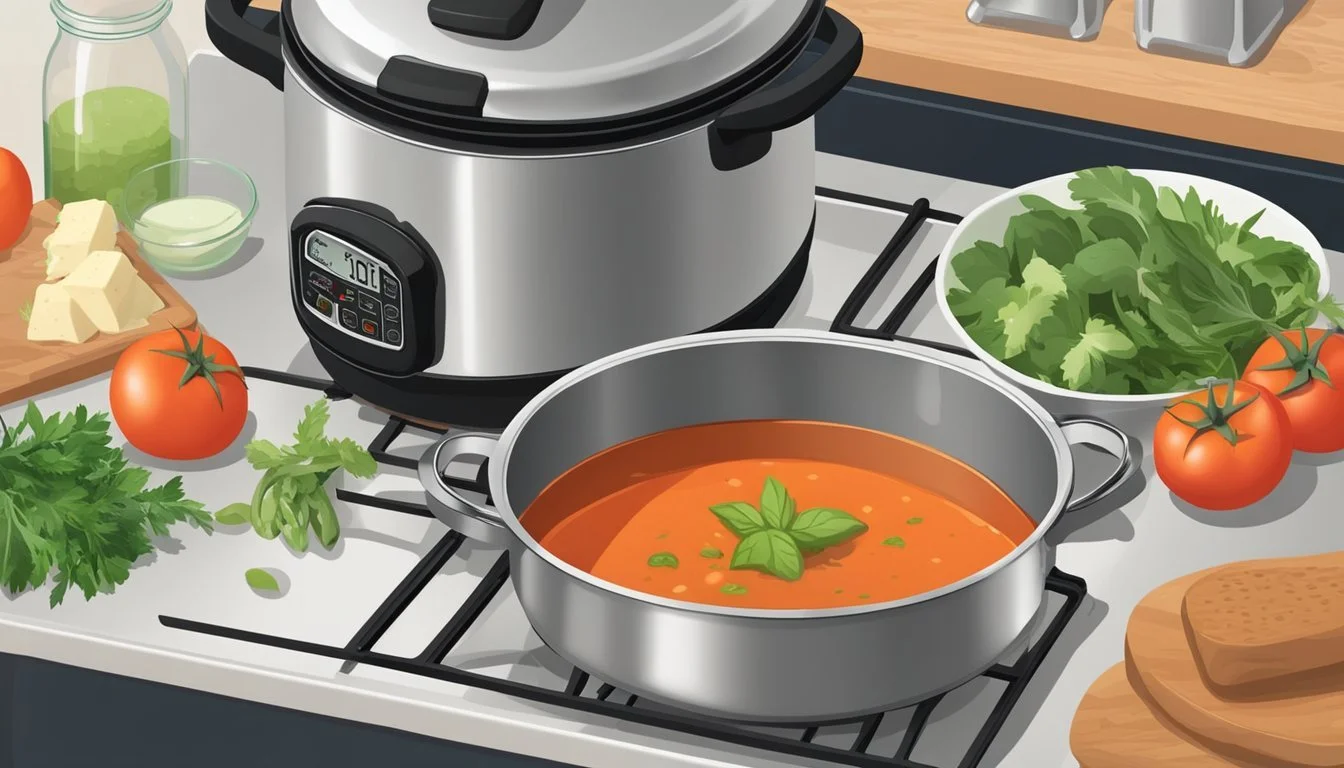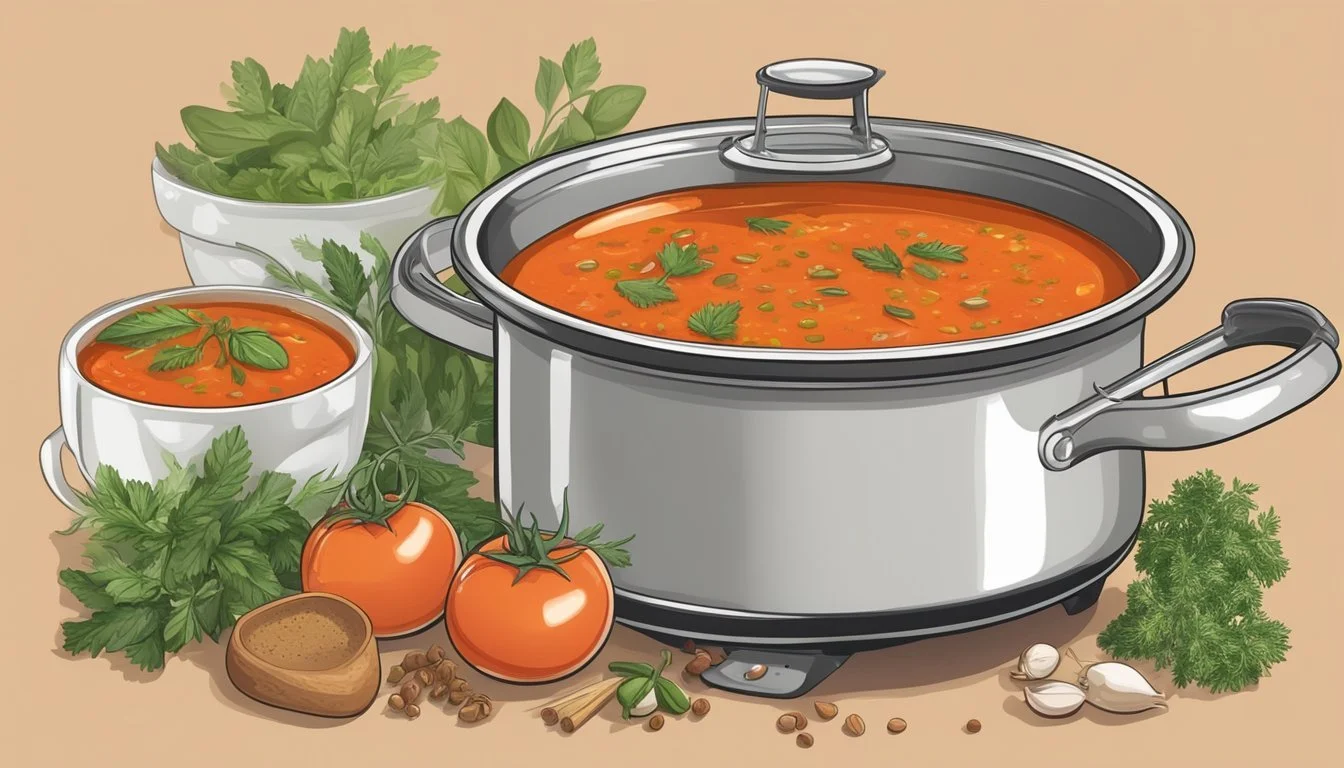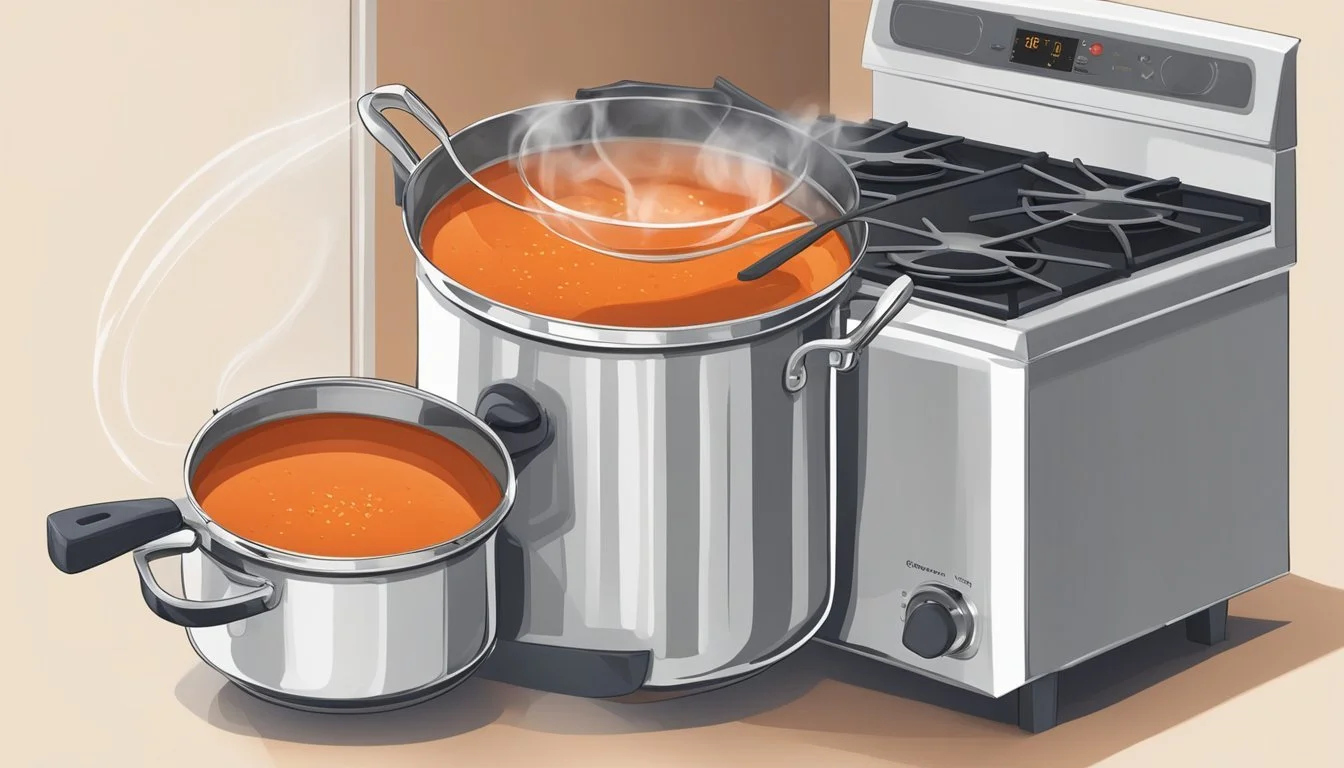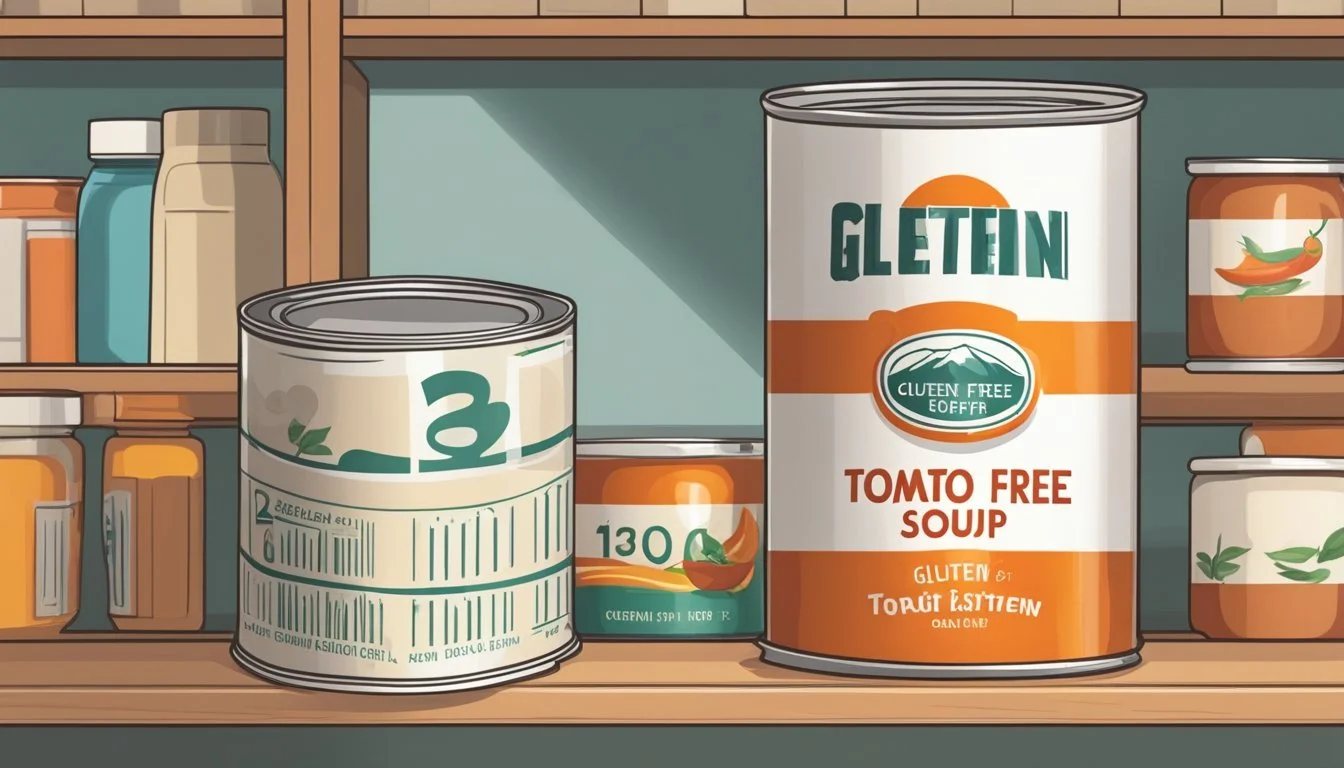How Long Does Gluten-Free Tomato Soup Last?
Storage Tips and Shelf Life
For those who love comforting, homemade soups, gluten-free tomato soup is a great choice, offering both taste and dietary benefits. A properly stored gluten-free tomato soup can last up to 4-5 days in the refrigerator, ensuring you have plenty of time to enjoy it. This makes it a perfect option for meal planning or simply having a ready-to-eat meal on hand for busy days.
The shelf life isn't limited to refrigeration. Gluten-free tomato soup can be stored in the freezer for up to three months, preserving its flavor and nutritional value. This extended storage time is ideal for those who like to prepare meals ahead of time without sacrificing quality.
Understanding these storage guidelines not only helps in maintaining the soup's freshness but also ensures food safety. By following these storage tips, individuals can savor the rich and flavorful taste of their gluten-free tomato soup well beyond the day it’s made.
Understanding Gluten-Free Tomato Soup
Gluten-free tomato soup is a comforting dish that caters to those avoiding gluten. This type of soup excludes wheat, barley, rye, and their derivatives. To be labeled as gluten-free, the soup must contain less than 20 parts per million (ppm) of gluten.
Ingredients for gluten-free tomato soup typically include ripe tomatoes, onions, garlic, and broth. Common thickeners like flour are replaced by gluten-free options such as corn starch or pureed vegetables. Certified gluten-free products are used to ensure safety.
A simple recipe might include sautéing onions and garlic in olive oil, adding tomatoes and broth, then simmering until everything is well-cooked. Blending the mixture creates a smooth consistency. Season with salt, pepper, and herbs for flavor.
For those with additional dietary preferences, many recipes offer vegan and dairy-free options. Substituting butter with olive oil and using vegetable broth instead of chicken broth keeps the soup plant-based. These variations maintain the rich taste and texture.
When shopping, look for certified gluten-free labels to avoid cross-contamination. Some brands specialize in gluten-free products, providing an extra layer of assurance. Always check ingredient lists for hidden sources of gluten.
Gluten-free tomato soups can be stored in the refrigerator for up to 4 days. For longer storage, freezing is an option. Portion the soup into airtight containers, leaving space for expansion. Thaw overnight in the fridge and reheat on the stove.
Key Ingredients
The essential ingredients for creating a flavorful and long-lasting gluten-free tomato soup are centered around fresh tomatoes, complemented by various flavor enhancers, and enriched with aromatic herbs and spices.
Tomatoes as the Foundation
Tomatoes serve as the primary ingredient and offer the rich base flavor for the soup. It's crucial to use ripe, fresh tomatoes for the best taste. You can also incorporate canned fire-roasted tomatoes for added depth and smokiness.
Roasting tomatoes with olive oil and a sprinkle of salt and pepper can enhance their natural sweetness. This process not only intensifies the flavor but also helps to achieve a naturally thicker consistency without the need for flour or other thickeners, keeping the soup gluten-free.
Flavor Enhancers
Flavor enhancers play a significant role in developing the soup's rich taste profile. Garlic and onion are often sautéed in olive oil to build a robust and fragrant base. The garlic cloves should be cooked until browned and then removed if a milder garlic flavor is preferred.
Not to be overlooked, carrots and potatoes can be added for sweetness and body. These ingredients complement the tanginess of the tomatoes and provide a balanced flavor. When cooking, the addition of tomato paste enhances the tomato flavor and adds a slight thickness, ensuring every spoonful is rich and satisfying.
Herbs and Spices
Herbs and spices are fundamental in adding layers of flavor to gluten-free tomato soup. Fresh basil and dried basil can both be used, where fresh basil leaves bring a subtle, sweet aroma, and dried basil offers a concentrated taste.
Oregano adds a slightly peppery and bitter note which complements the tomatoes well. Salt and pepper are essential to season the soup to your taste. Using fresh or dried herbs like basil ensures that the soup tastes fresh and appetizing, while spices can be adjusted to suit dietary preferences.
Adding these components meticulously creates a flavorful, gluten-free tomato soup that is both comforting and nourishing.
Preparation Techniques
To create a flavorful gluten-free tomato soup, key steps like stove top simmering and blending are crucial. These techniques ensure a rich, smooth texture and enhance the overall taste of the soup.
Stove Top Simmering
Cooking the soup on the stove top allows the flavors to meld properly. Start by heating oil in a pot over medium heat. Add chopped vegetables such as onions, carrots, and celery. Sauté them until they are softened.
Next, add tomatoes. Use a mix of fresh and canned fire-roasted tomatoes for depth. Include broth, usually chicken or vegetable, and let the mixture come to a simmer.
Simmering should be done partially covered for about 20-25 minutes. This process thickens the soup and intensifies its flavor. It's essential to stir occasionally to prevent the soup from sticking to the pot.
Blending for a Smooth Texture
Blending the soup is necessary to achieve a smooth and creamy texture. Once the soup has simmered and the vegetables are soft, it's time to puree.
An immersion blender is convenient for this task, allowing you to blend the soup directly in the pot. For those without an immersion blender, transfer the soup in batches to a countertop blender.
Blend until the soup reaches your desired consistency. For a thicker texture, blend less. For a smoother soup, blend thoroughly. After blending, return the soup to the pot if using a countertop blender and reheat if necessary.
Options like adding a bit of cream cheese can also enhance the creaminess, but ensure it’s well incorporated using the blender.
Customizing Your Soup
Achieving the perfect gluten-free tomato soup tailored to your palate involves adjustments in texture, dietary needs, and flavor enhancements. Experiment with these strategies to make your soup uniquely delicious.
Creating a Creamy Texture
For a richer, creamier texture, consider adding heavy cream or coconut milk. Heavy cream adds a luxurious mouthfeel, while coconut milk offers a dairy-free alternative that also complements the tomato flavors well.
Different alternatives for a creamy texture include:
Heavy Cream: Adds a rich and smooth consistency.
Coconut Cream/Milk: Ideal for a subtle coconut flavor and dairy-free option.
Cashew Cream: Blend soaked cashews with water for a creamy, nutty variation.
Additionally, blending cooked potatoes or carrots into the soup can help thicken and create a semi-creamy texture without any dairy.
Vegan and Dairy-Free Options
For those following a vegan or dairy-free diet, there are plenty of satisfying alternatives to traditional cream. Coconut milk or coconut cream offers a smooth, rich texture without the use of animal products.
Consider these vegan and dairy-free enhancements:
Cashew Cream: Soaked and blended cashews can be used to create a creamy, nutrient-rich base.
Soy Milk: Another plant-based option that blends well into soups.
Nutritional Yeast: Adds a cheesy flavor and thickens the soup slightly.
Season with nutritional yeast or umami paste to boost flavor profiles without compromising on dietary preferences.
Adjusting for Dietary Restrictions
Adapting your gluten-free tomato soup to meet other dietary restrictions can be straightforward. For low-sodium versions, opt for fresh tomatoes or low-sodium canned tomatoes and skip or reduce added salt.
Steps to adjust for various dietary needs:
Low-Sodium: Use salt-free broths and fresh ingredients.
Low-Fat: Opt for blending vegetables instead of adding dairy products.
Low-Carb: Focus on tomatoes and broth, avoiding added sugars or starchy vegetables.
When needing sugar-free options, avoid sweeteners and rely on the natural sweetness of high-quality tomatoes or add a dash of vinegar to balance flavors. Adding herbs like basil and oregano can also enhance taste without extra calories or sugar.
Proper Storage Solutions
Storing gluten-free tomato soup correctly ensures its freshness and safety. Key aspects include cooling, refrigeration, freezing, and the right containers.
Cooling and Refrigeration
After preparing gluten-free tomato soup, it is essential to cool it down before refrigeration. Allow the soup to reach room temperature or use an ice bath to speed up the cooling process. Once cooled, transfer the soup to an airtight container.
Refrigerated tomato soup should be kept at a consistent temperature of below 40°F (4°C) and can last for 4-5 days. Always label containers with the date to keep track of freshness.
Freezing Tips
For prolonged storage, freezing is a great option. Ensure the soup is completely cooled before freezing to prevent ice crystals from forming. Divide the soup into individual portions to make reheating easier.
Use freezer-safe containers and leave some space at the top, as the soup will expand when frozen. Label containers with the date and contents. Gluten-free tomato soup can be frozen for up to 3 months while retaining its quality.
Container Recommendations
Choosing the right containers is crucial. Glass containers are preferable for their durability and non-reactivity. They do not absorb odors or stains and are safe for both refrigeration and freezing.
Plastic containers are also an option but ensure they are BPA-free and designed for freezer use. Using airtight containers minimizes the risk of contamination and extends the soup's freshness. Reusable silicone bags are another eco-friendly choice that works well for both refrigeration and freezing.
Reheating and Serving
Reheating gluten-free tomato soup efficiently ensures it retains its texture and flavor, while understanding the best ways to serve enhances the dining experience.
Best Methods to Reheat
Reheating leftover tomato soup can be done effectively using a few methods. The stovetop method is highly recommended for its ability to evenly heat the soup. Pour the soup into a small pot and warm it over medium heat, stirring occasionally until it reaches the desired temperature.
For convenience, a microwave can also be used. Place single-serving portions in a microwave-safe bowl, cover to prevent splattering, and heat on medium power in 1-minute increments, stirring between heats.
Both methods help maintain the soup’s consistency and flavor, preventing any burning or overcooking.
Serving Suggestions
Serving gluten-free tomato soup with complementary sides can elevate the meal. A classic pairing is a grilled cheese sandwich, particularly when made with gluten-free bread to keep the dish entirely gluten-free.
For lighter options, consider serving the soup with gluten-free croutons or a simple side salad. These additions provide texture and variety, making the soup a more complete meal.
Another popular choice is fresh basil or a drizzle of cream on top of the hot soup to enhance its flavors. Whether serving as an appetizer or the main dish, these options ensure a delightful eating experience.
Nutritional Insights
Gluten-free tomato soup offers a variety of nutritional benefits that can be appealing for health-conscious individuals.
Tomatoes are rich in vitamin C, an important antioxidant that helps bolster the immune system and combat free radicals. Each serving typically contains a significant portion of the daily recommended intake of vitamin C, supporting skin health and overall immunity.
Vitamin A is another key nutrient present in tomato soup. It plays a crucial role in maintaining eye health and promoting healthy skin and mucous membranes.
Tomato soup is also a good source of potassium, an essential mineral that helps regulate blood pressure, maintain proper fluid balance, and support muscle and nerve function.
Key Nutrients in Gluten-Free Tomato Soup
Nutrient Function Example Benefits Fiber Aids digestion and promotes satiety Improves digestive health, reduces cholesterol Sodium Helps manage the body's fluid balance Too much may contribute to hypertension Vitamin A Supports vision and skin health Reduces risk of eye disorders Vitamin C Antioxidant, boosts immune system Enhances skin health, heals wounds Potassium Regulates fluid balance, supports nerve function Lowers blood pressure, reduces risk of stroke
Fiber is another important component. Although the fiber content may vary based on additional ingredients, it usually helps in digestion and maintaining a healthy gut.
However, attention should be paid to the sodium content, especially when using store-bought or canned stock, which can be high in sodium. Opting for low-sodium options or making your own stock can mitigate this issue.
By considering these nutritional elements, one can appreciate the balance of vitamins, minerals, and fiber that this soup can contribute to a daily diet.
Beyond the Recipe
Creating the perfect gluten-free tomato soup involves understanding both the critical tips for crafting a superb soup and potential substitutions to accommodate various dietary needs and preferences.
Tips for a Perfect Soup
When making homemade tomato soup, selecting simple ingredients ensures rich and authentic flavors. Fresh, ripe tomatoes can make a significant difference. Roasting the tomatoes, as some recipes suggest, enhances their natural sweetness and depth.
Sauteing vegetables like onions, carrots, and garlic initially helps in building a robust flavor base. Using a food mill to process the cooked tomatoes will result in a smoother, seed-free soup. For a creamier texture, you can blend the soup after cooking and add a splash of cream or a dairy-free alternative.
Seasoning is crucial. Fresh or dried herbs like basil, thyme, and oregano can elevate the soup. Adjust the salt and pepper to taste towards the end of the cooking process to avoid over-seasoning.
Common Substitutions
For those who are dairy-free, substituting cream with coconut milk or cashew cream can be an excellent option without losing the richness. Olive oil can replace butter for a vegan-friendly version.
If fresh tomatoes are unavailable, canned tomatoes can be a handy replacement with little compromise on flavor. Just make sure to adjust the seasoning accordingly, as canned tomatoes might have added salt.
For a low-carb variation, omit starchy vegetables like potatoes and incorporate more low-carb vegetables, such as zucchini or bell peppers. If avoiding sugar, experiment with natural sweeteners or simply rely on the carrots' natural sweetness to balance the acidity of the tomatoes.
Conclusion
Gluten-free tomato soup can maintain its freshness and flavor when stored correctly. Refrigerated soup typically lasts 3-4 days, provided it is kept in an airtight container.
Using the right techniques for storage is crucial. Label containers with the date of preparation to ensure the soup is consumed in a timely manner.
Freezing extends the shelf life significantly. Frozen gluten-free tomato soup can last up to 3 months. Ensure you use freezer-safe containers, leaving some space for the soup to expand as it freezes.
Thaw frozen soup in the refrigerator overnight for best results. Reheat it on the stove or in a microwave until it reaches a safe temperature.
By adhering to these guidelines, gluten-free tomato soup retains its quality, allowing for enjoyable meals without concerns about spoilage.


